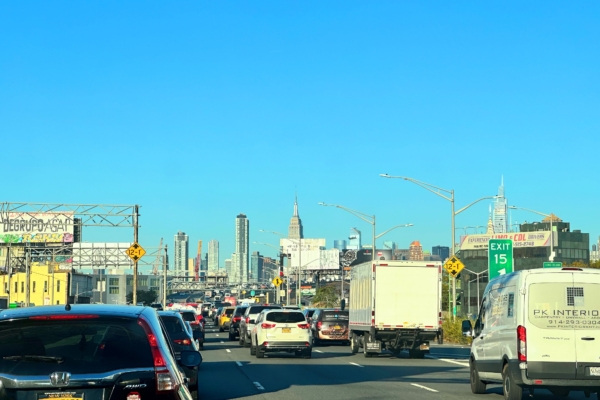On October 23, New York State Comptroller Thomas DiNapoli released a report pointing out that the Metropolitan Transportation Authority (MTA) is facing a more severe financial crisis than originally anticipated due to the suspension of the congestion pricing program. Governor Hochul responded by stating that the $15 congestion fee was too high, and if reduced, it may not require federal approval again, potentially allowing for a quick implementation.
Hochul was asked during the press conference about her response to DiNapoli’s report, which suggested that the financial crisis facing MTA had worsened due to the temporary suspension of the congestion pricing. Hochul indicated that DiNapoli’s report seemed to conflate MTA’s operating expenses with capital projects. She emphasized that MTA’s current financial situation is much better than when she took office as governor, thus avoiding a fiscal cliff.
She reiterated that the congestion fee suspension was temporary, emphasizing that the $15 base rate was too high. Hochul noted the unprecedented levels of inflation affecting the public, making it challenging to meet even daily expenses. She explained that when the congestion pricing law was passed in 2019, there was no significant inflation issue, and the $15 base rate was established without considering the shift to remote work due to the pandemic. The central business district residents subject to the congestion fee would have had to pay an additional $3,800 annually.
Hochul expressed her commitment to working with the state legislature to reintroduce the congestion pricing plan before the end of the year. When asked about the suitable fee to resume the program, such as $8 or $9, Hochul did not provide a specific answer but emphasized that the reintroduction depended on the fee being within the initial research range, potentially allowing for a swift restart without federal government reapproval.
Supporters of reinstating the congestion fee prefer a prompt resumption, fearing that if former President Trump were to be reelected, he might veto the congestion pricing plan upon taking office in January.
DiNapoli’s report issued on October 23 warned that MTA’s budget deficit was expected to reach $211 million this year and could escalate to $652 million by 2028. In the absence of a resolution to the congestion pricing suspension issue and other financial risks, the report suggested that MTA’s financial crisis could worsen, with the budget deficit potentially reaching $3 billion by 2028.
The report indicated that MTA plans to raise subway and bus fares to over $3 next year, but even this increase in fare revenue would not offset the anticipated losses from slower-than-expected ridership recovery. By 2027, MTA may need to cut over $800 million in services. Additionally, MTA faces other financial pressures, including record overtime expenses, lower-than-expected property tax revenue, and increasing fare evasion. The suspension of the congestion pricing had led to a $15 billion funding gap in MTA’s capital plan for 2020 to 2024 and a $33 billion gap for 2025 to 2029, totaling $48 billion in unsecured funding for these projects.
Therefore, DiNapoli cautioned that MTA was likely to face significant operational budget deficits once again.
MTA spokesperson John J. McCarthy acknowledged DiNapoli’s recommendations and stated that MTA had already saved significant operating costs and would continue to seek further savings. Hochul mentioned that collaboration with the state legislature would be sought in resolving the congestion pricing issue during the next session and finding innovative sources of funding for MTA’s next five-year capital plan to ensure people do not have to worry about MTA’s future.

